20.28.050 General standards.
A. Pedestrian-Oriented Design. All development in this chapter shall incorporate the following pedestrian-oriented design standards and guidelines:
1. Fronting infill housing units on existing improved streets shall be prioritized over fronting units internally off a new street, lane, or common pedestrian corridor. Gaps may occur as necessary for building setbacks, vehicular and pedestrian access, and features that contribute to the pedestrian realm.
2. Parking shall not be located between dwelling units and the street or lane except as allowed in this chapter.
3. Site design shall prioritize locating parking off an alley to minimize pedestrian/auto conflicts with cars backing out across pedestrian facilities such as city sidewalks and lanes.
4. When alley access is not available or feasible, and street/lane loaded garages are necessary:
a. The width of the garages and driveways accessing a street or lane shall be proportionally less than the width of the dwelling unit. See Figures 20.28.050(A) and (B).
b. The maximum width of a driveway serving an individual unit that crosses a pedestrian facility associated with a street or lane shall not be more than 12 feet. See Figure 20.28.050(A).
c. Architectural and landscaping details shall be embellished to minimize the visual presence of the garages and any open driveway parking. See Figures 20.28.050(B) and (C).
d. Parking shall only be located between the dwelling units and the street or lane when in conjunction with a driveway access to a garage.
Figure 20.28.050(A)
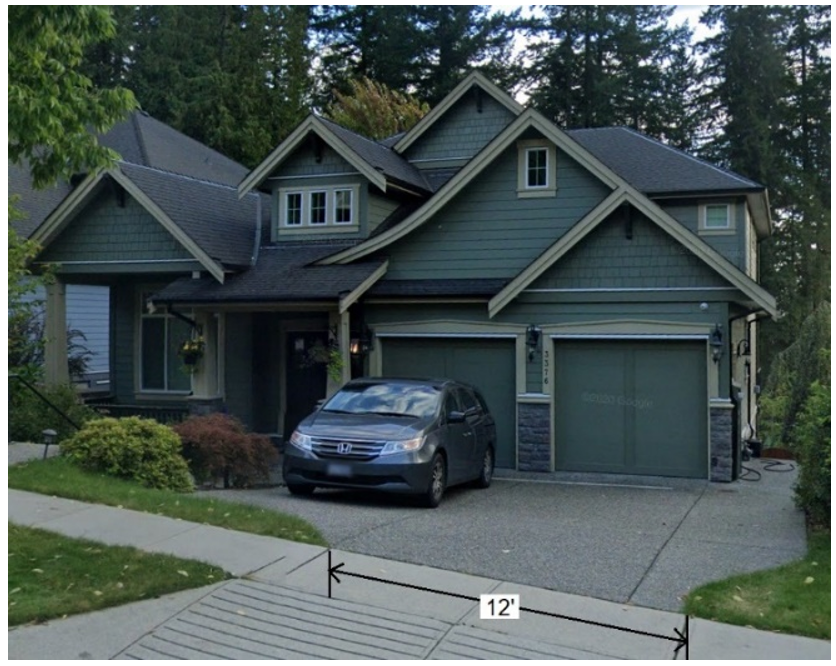
Figure 20.28.050(B) Design Strategies to Minimize Garages and Driveways
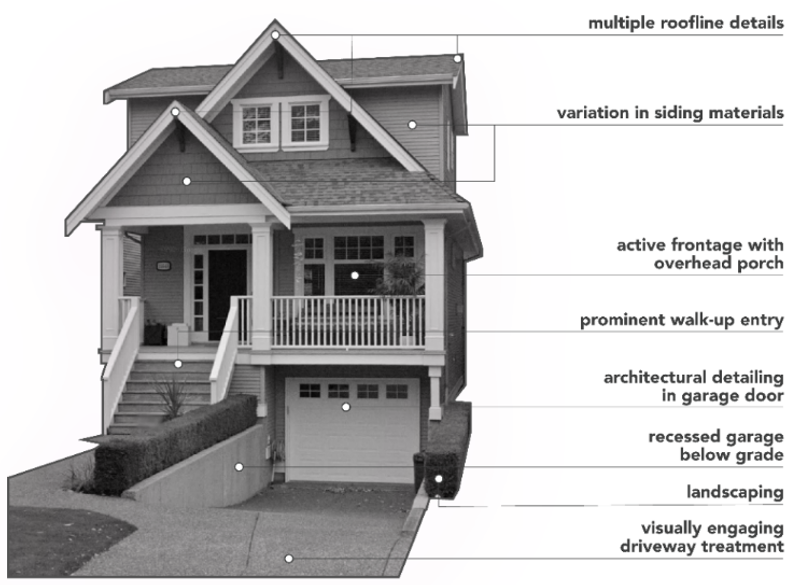
Figure 20.28.050(C)
The figures below show an example of townhouses that incorporate the design principles detailed in Figure 20.28.050(B) above, and how the visibility of their garages is diminished as viewed from different angles.

Images courtesy of Matt Remsbecher, Slab Design Inc.
B. Density. Density shall be as specified in the associated area in the zoning table. If there is more than one density listed, the highest listed density for any housing type specified in the applicable neighborhood subarea pursuant to zoning tables in Chapter 20.00 BMC shall be considered the maximum possible density. The maximum density may be exceeded through the density bonus provisions pursuant to BMC 20.32.040(B)(5) and 23.08.040(C).
C. Lot Requirements. There are no minimum lot dimensions, lot sizes or minimum street frontage requirements unless otherwise specified in this chapter. All infill housing development shall provide access to a public right-of-way whether directly, by easement, or other means acceptable to the planning director.
D. Subdivision.
1. Infill housing units approved as part of a cluster subdivision in single-family zoning subareas with a cluster, cluster detached, and cluster attached shall be located on separate, fee simple lots. All cluster subdivisions that include infill housing types shall comply with the lot transition provision pursuant to BMC 23.08.060(F)(1).
2. Sites with duplex, triplex, fourplex, cottage, shared court, garden court, and townhouse types in all other zoning areas permitting infill housing types may be subdivided into lots that do not comply with development standards in this title or BMC Title 23 individually, as long as the parent site as a whole complies with this chapter. Where allowed by zoning, this provision also applies to subdivision of individual commercial, multifamily, and other uses onto separate lots when proposed as mixed uses with an infill housing development. Subsequent alterations to buildings are subject to review and approval of plans such that they are consistent with the regulations in this chapter that were previously applied to this site.
3. The plat shall contain notice of any associated land use approvals.
E. Common Facilities. Legal documents identifying the rights and responsibilities of property owners and/or the homeowners’ association for use and maintenance of common facilities shall be submitted for approval by the planning director and recorded. When part of a subdivision they shall be noted on the plat.
F. Encroachments and Common Wall Development.
1. Encroachments into required yards are allowed as specified in BMC 20.10.080(B).
2. For common wall development such as townhouses and detached garages, and encroachments over property lines such as eaves, a joint agreement must be approved as to form by the city of Bellingham and recorded with the Whatcom County auditor’s office and thereafter filed with the city.
3. Required building setbacks from streets may be reduced to be consistent with that allowed by the underlying zoning for other permitted housing types such as apartments in multifamily zoning.
G. Private Lanes, Common Pedestrian Corridors, and Alleys. The following applies to the design and development of private transportation facilities within a development:
1. Each lot must abut a street, lane, or common pedestrian corridor except lots for individual units in a shared court. Each dwelling unit must abut and have access to a pedestrian facility that provides access to a street or lane.
2. Lanes and common pedestrian corridors shall be considered streets for frontage, setback and design purposes.
3. Lanes, common pedestrian corridors, and alleys must be constructed and maintained to the following minimum improvement standards:
|
Travel Lane Width |
Pedestrian Path Width |
Total Width |
|
|---|---|---|---|
|
Small Lane (one to two dwelling units) |
9 feet |
N/A |
9 feet |
|
Medium Lane (three to five dwelling units) |
11 feet |
4 feet, one side |
15 feet |
|
Large Lane (six plus dwelling units and lanes over 100 feet long) |
12 feet |
4 feet, both sides |
20 feet |
|
Alleys |
15 feet |
N/A |
15 feet |
|
Common Pedestrian Corridor |
N/A |
4 feet |
10 feet |

Figure 20.28.050(D) Small Lane Plan and Section
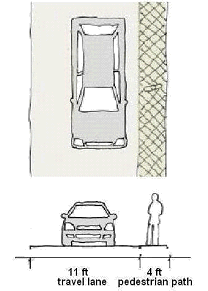
Figure 20.28.050(E) Medium Lane Plan and Section

Figure 20.28.050(F) Large Lane Plan and Section
4. Lanes, common pedestrian corridors, and alleys must be:
a. Surfaced with a hard material such as concrete or asphalt, except that asphalt shall not be used for common pedestrian corridors. Permeable pavement shall be used for hard surface ground cover areas unless infeasible per the infeasibility criteria listed within BMP T5.15 of the Ecology Manual. Projects that include less than 2,000 square feet of new or replaced impervious surface are exempt from this requirement. Gravel or loose material is prohibited.
b. Maintained to city standards, and legal documents regarding common facilities and maintenance must be submitted to the city for review and approval.
5. Pedestrian paths within a lane must be delineated with a change in material, color or pattern.
6. Pedestrian paths within a lane or fire apparatus road must be flush with the travel lane.
7. No single lane may serve more than eight dwelling units unless emergency access can be provided compliant with BMC Title 17.
8. Parking is not allowed within the lane width but may be allowed in a parallel pocket abutting a lane.
9. Pedestrian paths within common pedestrian corridors shall be separated from property lines, fences, walls and hedges by a minimum of two feet. See Figure 20.28.050(G).
Figure 20.28.050(G) Common Pedestrian Corridors

H. Parking. All housing types shall provide parking in accordance with the following standards:
1. Number of Spaces.
a. Infill Housing. Dwelling units less than 1,000 square feet shall provide one on-site parking stall. Units of 1,000 square feet or greater shall provide two on-site parking stalls.
b. Guest Parking. When a site contains 20 or more units and lacks on-street parking abutting or parking within the parent site, the planning director may require additional guest parking. Guest parking may be improved on site, or in the public right-of-way with approval of the city engineer.
2. Parking Stall Dimensions. When parking for individual units is in separate garages or carports, parking stalls shall be at least nine feet by 18 feet. Open parking and group parking may use dimensional parking standards in BMC 20.12.010.
3. Parking Setbacks. The required setbacks for open parking are as follows:
a. Streets: The parking shall be set back at least 25 feet from a front street and 10 feet from a side flanking street, except that one tandem stall may be located in a driveway that provides access to a garage or carport.
b. Side and rear: five feet, except none for side and rear yard when parking is perpendicular to and accessed directly from the alley.
4. Tandem Parking. Tandem parking is allowed when:
a. No more than two spaces are parked in tandem.
b. One tandem space per tandem pair is in a structure.
5. Access and Maneuvering.
a. If a platted alley exists, parking shall be accessed via the alley except when the planning director determines that alley access is impractical or environmentally constrained.
b. If a lane exists, but no alley, parking shall be accessed via the lane.
c. The maneuvering area between the back of parking (or a garage/carport entry) and an alley or lane shall not be greater than 10 feet or less than 18 feet to prevent parked cars from overhanging into a lane or alley. See Figure 20.28.050(H).
Figure 20.28.050(H)
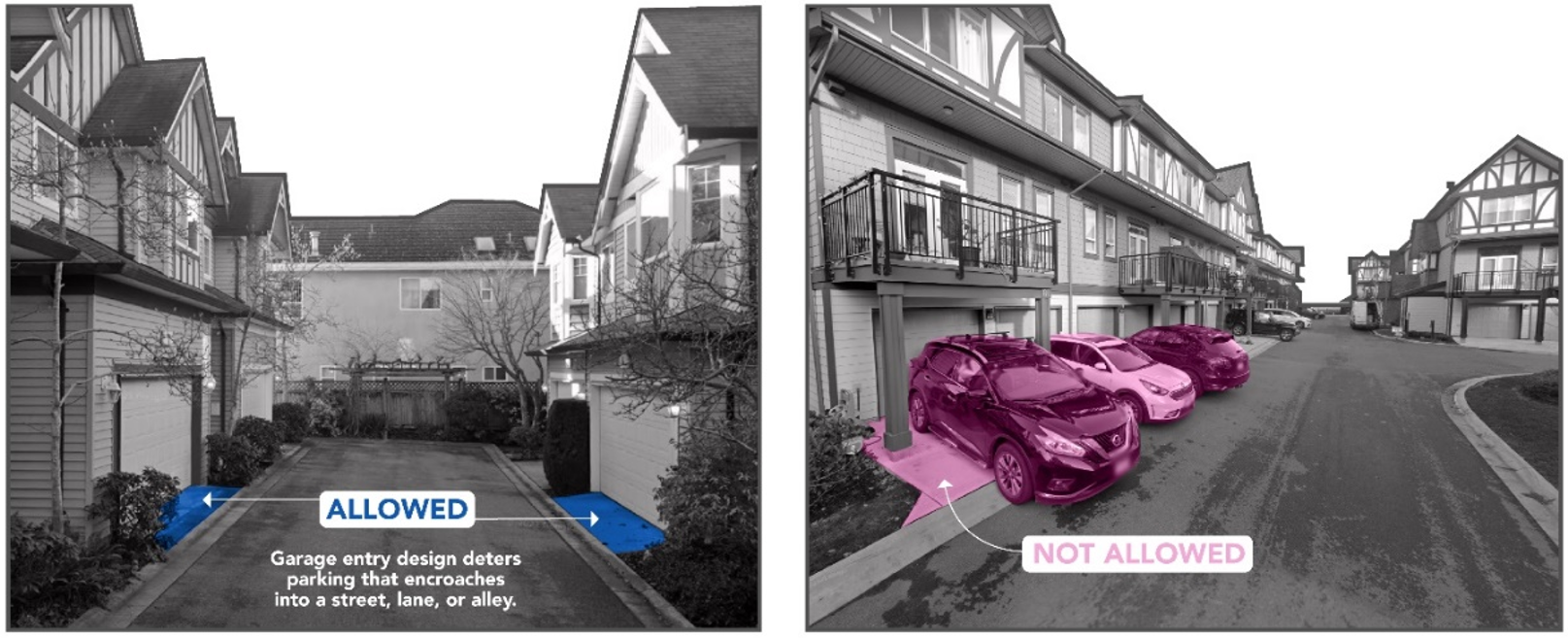
6. Parking may be consolidated for all housing types except small lot.
7. The planning director may reduce parking requirements based on applicant’s demonstration of site-specific factors that justify a lower standard consistent with the purpose and intent of this chapter.
I. Landscaping and Fencing. Development shall provide landscaping in accordance with BMC 20.12.030 except as provided herein and as specified under each housing type.
1. One tree shall be required for every 40 feet of street or lane frontage. Trees required along a lane or common pedestrian corridor shall be installed adjacent to the lane, or adjacent to or within the pedestrian corridor.
2. Landscaping shall be provided between each housing unit and abutting streets, lanes, alleys, and common pedestrian corridors except where driveway and walkway crossings occur.
3. Along streets, lanes and alleys, landscaping shall be provided to separate the parking and driveways between individual dwelling units, or the director may approve an alternative approach that breaks up parking and provides visual interest to parking facilities. See Figure 20.28.050(I).
Figure 20.28.050(I) Examples of Alley Landscaping Between Driveways
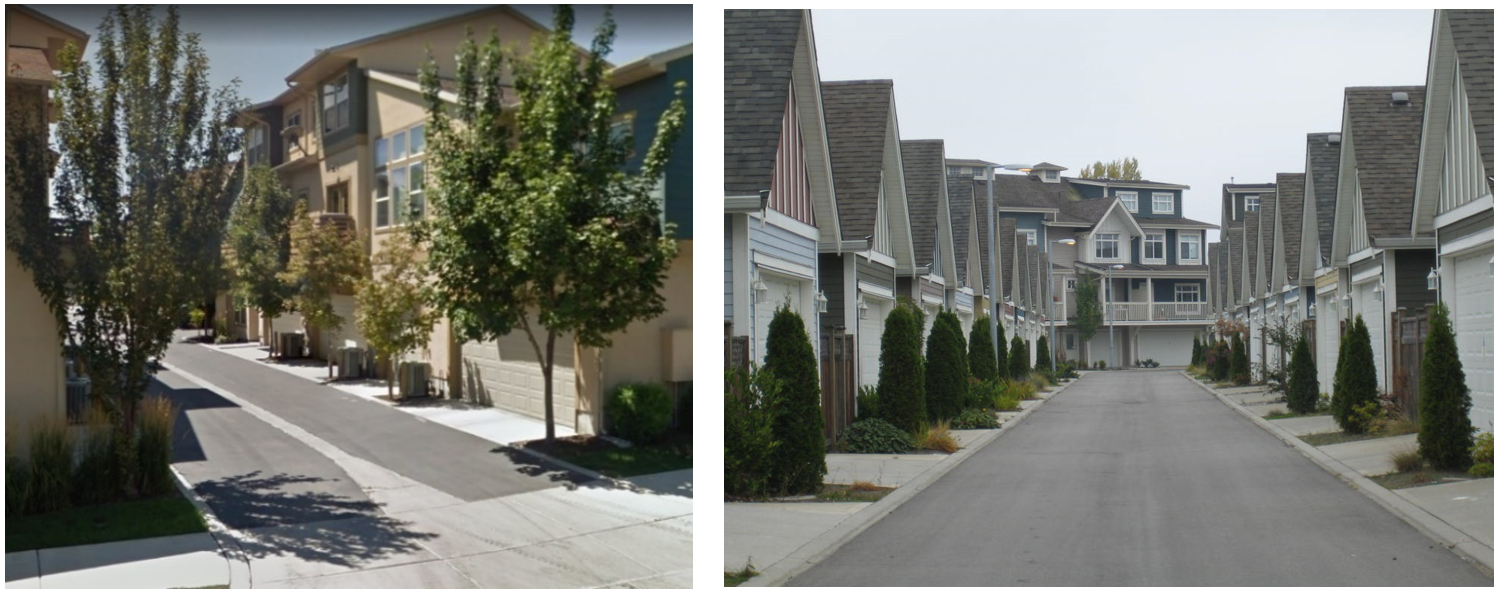
4. All fences in the front and side street setbacks are limited to 42 inches in height and may be no more than 60 percent opaque. Chain link or cyclone fencing is not allowed in the front or side street setback. [Ord. 2022-01-002 § 8; Ord. 2021-10-044 § 7; Ord. 2018-12-036 § 28; Ord. 2017-03-009 § 18; Ord. 2009-08-047].